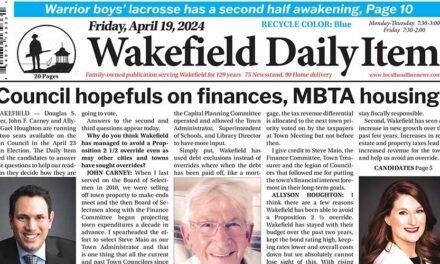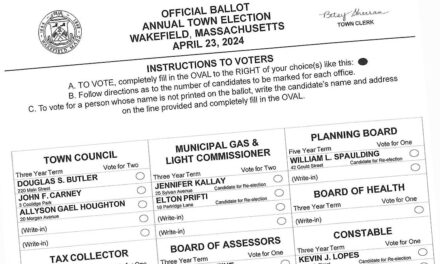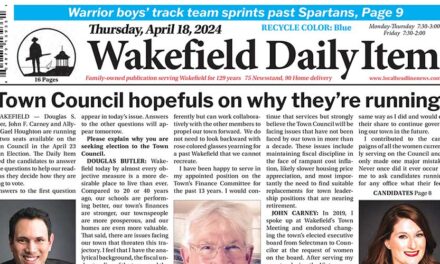Published in the January 25, 2017 edition
By MARK SARDELLA
WAKEFIELD — It appears that the idea of a uniform later start time for all students at Wakefield Memorial High School is not in the cards, but that doesn’t mean school officials are abandoning the idea that some teenagers would benefit from the additional rest that would come from starting school later.
School Superintendent Dr. Kim Smith told the School Committee last night that she is exploring the possibility of a model where some WMHS students could start their school day later, by choosing not to take the 8 a.m. class.
Several studies have shown that early school start times have a negative impact on adolescents, whose natural sleep cycle runs from later at night to later in the morning. The American Academy of Pediatrics has recommended that middle and high schools start at 8:30 a.m. or later to allow students the opportunity to get the recommended amount of sleep on school nights, about 8.5-9.5 hours. According to a Centers for Disease Control study, insufficient sleep is common among high school students and is thought to be associated with several health risks including being overweight, drinking alcohol, smoking tobacco and using drugs, as well as poor academic performance.
A joint resolution was created last year by the Middlesex League school superintendents agreeing to explore the possibility of later high school start times with the idea of coming up with an agreement for the 2017-18 school year.
Smith noted that Melrose High School has pushed its start time back to 8:15 a.m. But she pointed out that Melrose does not provide bus transportation, whereas Wakefield has a complex system of bus route timing, and changing the start time at the high school would have a ripple effect on the ability of buses to get to students at other schools on time.
“I wanted to explore preliminary data to understand the impact on bus transportation if we moved to a later start time of 8:30 a.m. at WMHS,” Smith said.
She said that she investigated three later start time options related to bus transportation:
• Keep the same number of buses and swap elementary and high school start times.
• Eliminate bus service for high school students.
• Change only the high school start time and add buses to accommodate the change.
Smith said that she asked School Business Administrator Michael Pfifferling to analyze the impact of each of those options.
Pfifferling said that swapping the elementary and high school start times would be difficult to accomplish. He noted that bused high school students are currently dropped off by 7 a.m., allowing the buses to get to the Galvin Middle School students on time. He told Smith that they would not have the option of dropping off elementary school students that early because the younger kids require a level of supervision that high school students don’t.
Regarding the option of eliminating bus service for high school students, Pfifferling noted that currently 122 students take the bus to school in the morning, while 188 take the bus home in the afternoon. Smith concluded from those numbers that eliminating bus service was not a viable option.
In terms of adding buses to accommodate the later start time, Pfifferling said that currently the schools are running five morning buses and seven afternoon buses. If they were to increase that and run eight morning and eight afternoon buses, the cost for FY 2018 would be $363,000, which is $117,160 more than FY 2017 budget.
Based on those numbers, Smith said that she concluded that adding buses would be cost prohibitive.
But Smith said that a recent workshop she attended only reinforced to her that the research is compelling that it’s healthier for adolescents to sleep later. She noted that the optimum time for high school students to start their school day is 9 a.m., but she added that most school districts would have a hard time doing that. She told the School Committee that she believed that if it isn’t possible to push the WMHS start time back to at least 8:30 a.m., the small gain in student sleep time would not be worth the disruption.
Smith said that she then began thinking about the issue in different ways. She said that differentiating among students led her to realize that while many adolescents need the extra sleep in the morning, others are eager to start early. She wondered if the best option might be to offer students an option for not scheduling an 8 a.m. class. She said that she hadn’t vetted the idea fully but believed that it could work. One possibility would be to incorporate some form of online work for those students who choose a later start time.
Smith told the School Committee this is where the matter stands at this time and she would report back with further developments.




